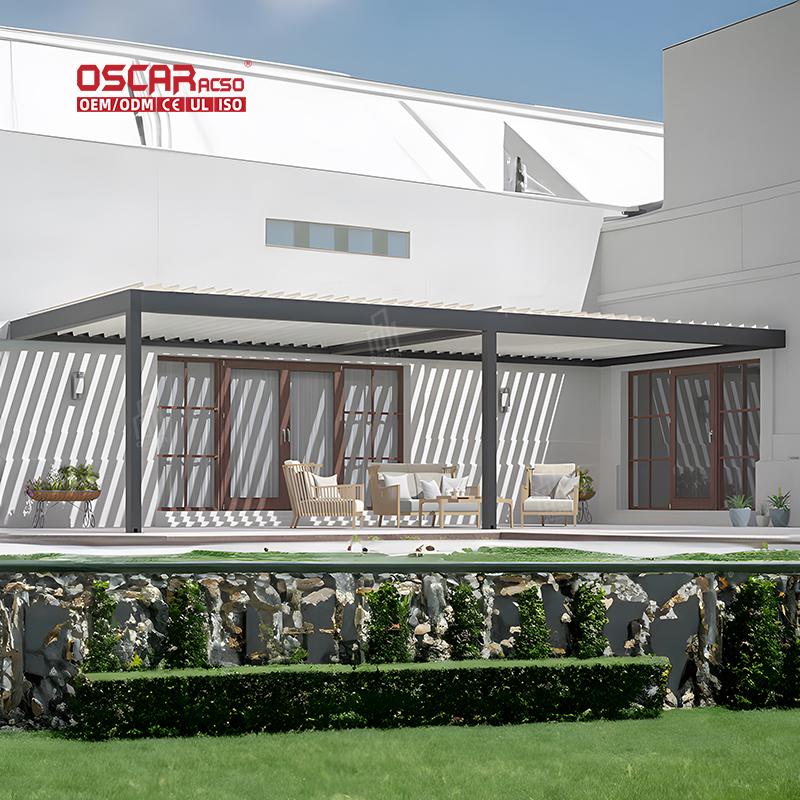Pergola Post Planning, Unlock the Secrets to Perfect Support
Ever wondered how many posts your dream pergola really needs? 🤔 It\'s not just about throwing up four poles and calling i...
Ever wondered how many posts your dream pergola really needs? 🤔 It’s not just about throwing up four poles and calling it a day. The number is a delicate dance between size, design, and safety. Let’s dive in and find the perfect support for your outdoor oasis.
The magic number for a standard, self-supporting pergola covering around 20m² is typically four posts. This configuration offers a solid and aesthetic solution, creating a perfect balance between design and stability for most gardens and patios.
However, size is the ultimate decider. For larger pergolas whose dimensions exceed a standard module—particularly those with a width greater than 4.5 meters and an overhang up to 6 meters—the number of posts should be doubled to eight. This adaptation ensures the structure remains strong and secure under increased physical stress, allowing it to withstand the elements without sacrificing its elegant appearance or generous living space.
📍 Size and Span: The Primary Factors
The dimensions of your pergola are the most critical factor. The general rule is that the larger the area you want to cover, the more support you’ll need.
- •
A cozy 10′ x 10’ structure can often be supported by four posts.
- •
A more expansive 12′ x 20’ pergola might only require four posts, but this pushes the limits; for such a size, using 6×6 posts instead of 4x4s becomes crucial for safety and to prevent sagging.
- •
For anything larger, or if you’re adding significant weight (like a dense shade cloth or a growing vine), additional posts are highly recommended to maintain structural integrity.
The space between posts is key. For smaller pergolas, optimal spacing is around 4-6 feet. A wider spacing, say 8 to 10 feet, is common but requires appropriately sized beams and posts to handle the load. It’s a balancing act—more posts mean more support but also more material and a different visual impact.
🛠️ Post Specifications: More Than Just a Number
It’s not just how many, but also what kind. The size and material of your posts are equally important for a sturdy build.
- •
Post Size: For most standard pergolas, 6×6-inch posts are recommended to adequately support the structure. While 4×4-inch posts can work for very small pergolas with less than 6 feet between posts, they are best suited for structures under 3 feet in height and can be prone to warping or twisting under heavier loads over time. For larger or heavier designs, 6×6 posts offer greater durability, strength, and a more substantial aesthetic.
- •
Installation Depth: Simply placing posts on the ground isn’t enough. For stability, especially in windy conditions, posts need to be securely anchored. A common recommendation is to bury them at least 24 inches deep, often in concrete, to prevent shifting or toppling. In colder climates, footings may need to extend below the frost line.
🏡 Design and Attachment: Changing the Game
The required number of posts can change dramatically based on your pergola’s design. A freestanding pergola typically requires a post at each corner, and sometimes more along the span for support.
An attached (or ledger) pergola is secured to your home on one side using a ledger board. This design can reduce the number of freestanding posts needed. For example, instead of four posts for a freestanding structure, an attached one might only need two posts on the outer edge, as the house supports the other side.
You might also encounter a double pergola, which consists of multiple bays. These structures, ideal for longer walkways or gardens, will naturally require more posts—often having parallel posts and rails for structural support.
💡 Pro Tips and Common Pitfalls
So, is four posts always the answer? Not necessarily. While it’s a great starting point, blindly sticking to this number for a large project is a common mistake. Always prioritize structural integrity over a fixed number. A wobbly, sagging pergola is no one’s dream.
When in doubt, consult local building codes. They often have specific requirements for structural supports based on your region’s weather patterns (like snow or wind loads). It’s also wise to use a pergola spacing calculator or consult with a professional for custom designs.
Remember, the goal is to create a beautiful and safe space for relaxation. Investing in the right foundation—both in terms of the number and size of posts—ensures your pergola will be a cherished part of your home for years to come. A well-built pergola is an investment in outdoor living, and it all starts from the ground up.


